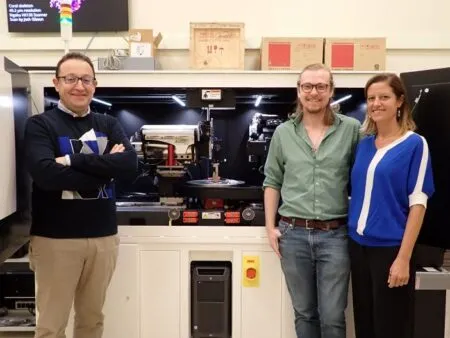Is there really any substitute for physical attendance at trials? Aerospace engineers Garnet Ridgway and Sophie Robinson, share their opinions, but will they agree?
Garnet Ridgway: For this issue, the authors of the head-to-head feature are taking the somewhat controversial position of agreeing with each other. Attending trials in person is undoubtedly the way to get the most out of the activity, and that is likely to be the case for many years to come. The aim of this column, therefore, is to explore the key enablers that would make remote ‘attendance’ at trials as good as the real thing.
The fundamental objective of a practical trial is data gathering, whether in the form of recorded parameters or pilot opinion. In the age of fiber-optic internet connections and mobile broadband, the transfer of data between physical locations may seem a trivial problem. However, aerospace testing (particularly when defence-related) almost invariably occurs at remote or isolated facilities, where communications can be unreliable at best. This in effect rules out the meaningful participation of team members that are not physically present at the test site. In an ideal world with universal, high-speed, secure internet access, this need not be the case. Indeed, it could be possible to have the majority of the test team in a central location, managing a number of very small satellite teams. This could be beneficial in terms of resource allocation and project management.
Assuming the existence of this perfect internet connection brings additional opportunities – not just to make physical remoteness from the trial less of a disadvantage, but to enhance the whole activity. For example, network-enabled personal devices such as Google Glass could give trials engineers instant access to a huge support team, all of whom would be able to see and hear the test activity in real time. This could eliminate the need to frantically search through pages of notes in the back of a test aircraft as it hurtles through an aggressive maneuver; instead, the information could be provided in augmented reality, appearing as virtual notes that update automatically as the test progresses. Clearly the use of such technology presents huge challenges in terms of usability, safety and compatibility with aircraft systems, but the potential advantages are tantalizing.
It is again necessary to concede that there is currently no substitute for attendance at trials. However, emerging technologies present myriad opportunities, meaning that virtual ‘attendance’ at trials doesn’t have to be the same as traditional attendance – it could be even better!
Garnet Ridgway has a PhD from the University of Liverpool. He has designed cockpit instruments for Airbus and currently works for a leading UK-based aircraft test and evaluation organization.
Sophie Robinson: This article is brought to you from on board RFA Argus, a UK aviation training vessel. We’re currently 130 miles off the Scilly Isles in the Celtic Sea, conducting a ship helicopter operating limit trial – so the theme of this issue’s article is highly relevant! There really is no substitute for attending a trial – being present at the heart of the action offers a unique and valuable perspective.
The ultimate priority of any trial is safety, and the key to progressing a trial safely is to make observations and judgments based on what is happening there, and then assimilating information from a variety of sources to make an informed decision on what the next test point should be, or if it’s time to call it a day. This would be an impossible task from anywhere other than the ship’s bridge or the back seat of the aircraft.
Distance from the trial also makes it difficult to capture instantaneous feedback from the test environment. Decisions on trial progression are made using information from a variety of sources – it isn’t just numbers on a screen. The tone of voice of a pilot; the extended periods of radio silence (where the pilot is normally cursing the trials manager for asking them to undertake a particularly tasking test point!); and awareness of factors such as increasing ship motion or an approaching patch of inclement weather all have to be assimilated to decide if it’s safe to continue progressing the trial. It would be nearly impossible to do this without being there to see at first hand.
Working as part of a combined test team could also prove a challenge when distanced from the trial environment. Managing the conflicting priorities and expectations of all parties involved in a trial can be taxing enough when everyone is in the same room together – never mind when they’re scattered across the country, or even the world.
Attendance at trials is absolutely worth the expense, time and inconvenience. No matter how sophisticated predictive tools such as simulation and modeling become, there will always be a requirement to carry out real-life trials. If living on board a ship for five weeks has taught me anything, it’s that, while tiring and occasionally stressful, trials can also be quite fun.
As engineers, we like to go and ‘do’ – being shut in the office every day just wouldn’t be quite the same, would it?
Sophie Robinson is currently finishing her PhD as part of the Flight Science and Technology Research Group within the Centre for Engineering Dynamics at Liverpool University. In the course of her research, Sophie regularly works with test pilots




